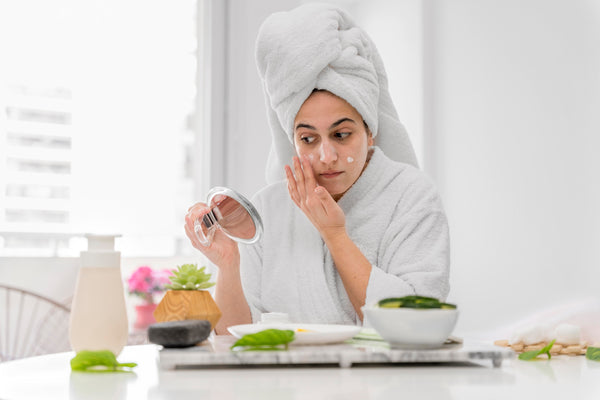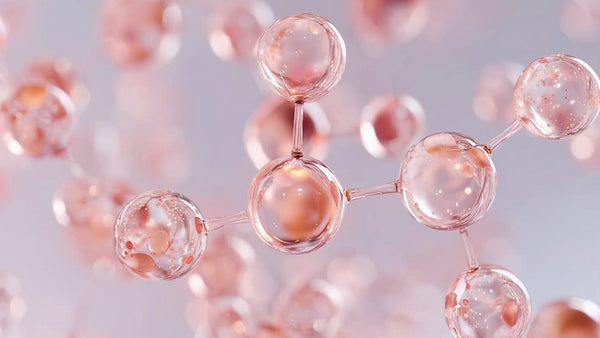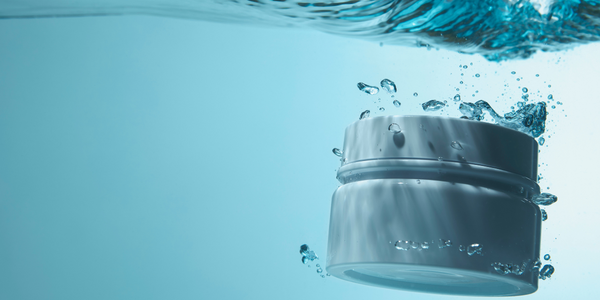How has Skincare Changed from the 1920s to – 2010s, and How is it Now?
Let’s look at skin care through the various timelines.
1. Skincare in the 1920s
During the 1920s not much was known about skincare. This was the era when women started to get introduced to the topic of personal beauty, and started to take care of themselves in small ways. However, they relied more on home remedies and there weren’t any commercial beauty products available back then.
2. Skincare in the 1930s
In the 1930s, the summer tan look became popular globally, especially in America. Cosmetic companies launched dark shades of face powders that offered a barely-there tan to the women. Also, it was during the 1930s that lengthy skincare routines came into existence.
3. Skincare in the 1940s
It was in the 1940s when women focused on their skin more than anything else. Cold creams also came into existence during this decade. Women were so fascinated with cold creams that they would apply them overnight on their faces to achieve moisturised and well-hydrated skin.
4. Skincare in the 1950s
The DIY or do-it-yourself regime isn't just a few years old. It actually started back in the 1950s when women blended baby powders with petroleum jelly to discover better skincare results.
5. Skincare in the 1960s
You must be using some sunscreen that has been formulated with SPF. Well, it was introduced back in the 1960s. It was around this time that people realised the ill effects of prolonged exposure to the sun on one’s skin. Thanks to the 1960s that people realised and acknowledged the importance of using sunscreen lotions.
6. Skincare in the 1970s
Women in the 1970s focused more on natural beauty while discarding or significantly reducing the use of makeup products. Several cosmetic brands launched skincare products that used natural or organic ingredients.
7. Skincare in the 1980s
Anti-ageing products became popular during this period. Even according to the NCBI, tretinoin was recognized for its potential anti-ageing abilities during the 80s. The over-the-counter skin care products used collagen that helped reduce fine lines wrinkles and improve elasticity and hydration.
8. Skincare in the 1990s
If you're into skincare, you must have heard the buzz about AHAs or alpha hydroxy acids. However, NCBI says that it was in the 1990s, when the anti-ageing benefits of AHAs were recognized and more and more skin products started using them as an essential ingredient.
9. Skincare in the 2000s
At the beginning of this decade, tanned skin got revived again. Everyone from common people to pop stars was into ‘fake baking’- a term used by people to refer to the tanned look. However, towards the end of this decade, people became aware of the dangers associated with tanning beds and moved towards spray tanning.
10. Skincare in the 2010s
A lot of products kicked into the market during the 2010s. There were so many options that it became hard to make a choice. There were essential oils, K-beauty (Korean beauty products), J-beauty (Japanese beauty products), and lots of other skincare trends back then. Even the concept of using organic products came up in a big way.
What is Skincare Like in the 2020s?
Well, we've finally reached the 2020s. Skincare has completely changed or upgraded during the first two years (one year and a quarter to be precise) of this decade. Nutrition brands have introduced effective supplements for skincare, with collagen being the main ingredient or component in most products..
It’s now more than ever that women have become more conscious about the ingredients used in the product and are spending good money on natural products. Also most brands are focused on improving skin health by correcting the problem within. And keeping that in mind, one of the most amazing and unique skincare products is Skin Fuel.
Skin Fuel from Wellbeing Nutrition(WBN) is the unique drinkable skincare product that comes with:
- Bioactive Japanese Marine Collagen for slowing down signs of skin ageing.
- Essential skin-care vitamins
- Hyaluronic Acid with a natural ability to retain water.
- L-glutathione to improve skin elasticity and reduce wrinkles.
The above ingredients are all you need to experience amazing skincare benefits such as:
- Better skin elasticity & firmness
- Improved skin hydration
- Reduced acne and inflammation
- Glowing and radiant skin
- Fewer wrinkles and fine lines
- Increased collagen levels
All of the above benefits come in the form of effervescent tablets known as Skin Fuel. These tablets dissolve as soon as you drop them into water. So, all you need to do is drop a single tablet into a glass of water, and you're ready to consume a tasty and healthy elixir for your skin.
Skin Fuel is free from GMO, sugar, gluten and is dermatologist formulated, has age-defying nutrition along with an advanced bioactive formula– all of which work on your skin problems and revive it from within. Also, it's tested and offers no side effects. So, if you’re someone who is tired of persistent skin problems, you ought to order a pack now.
Wrapping Up
No matter how gradually the skincare regime has changed over the decades, one thing you can be sure of is that this decade's skincare is probably the best as it deals with the problem at its root. With so many amazing and natural products like Skin Fuel, skin care as a concept and routine has become quite effortless. So, it’s about time you give up on the expensive topical skin care products and give Skin Fuel from Wellbeing Nutrition a genuine try.
References
Mukherjee, S., Date, A., Patravale, V., Korting, H. C., Roeder, A., & Weindl, G. (2006). Retinoids in the treatment of skin aging: an overview of clinical efficacy and safety. Clinical interventions in aging, 1(4), 327–348. https://doi.org/10.2147/ciia.2006.1.4.327
Bolke, L., Schlippe, G., Gerß, J., & Voss, W. (2019). A Collagen Supplement Improves Skin Hydration, Elasticity, Roughness, and Density: Results of a Randomized, Placebo-Controlled, Blind Study. Nutrients, 11(10), 2494. https://doi.org/10.3390/nu11102494
Papakonstantinou, E., Roth, M., & Karakiulakis, G. (2012). Hyaluronic acid: A key molecule in skin aging. Dermato-endocrinology, 4(3), 253–258. https://doi.org/10.4161/derm.21923
Sitohang, I., & Ninditya, S. (2020). Systemic Glutathione as a Skin-Whitening Agent in Adult. Dermatology research and practice, 2020, 8547960. https://doi.org/10.1155/2020/8547960



























 DOWNLOAD NOW
DOWNLOAD NOW
